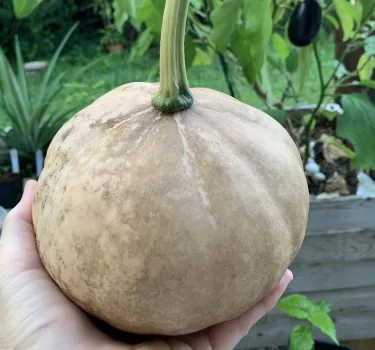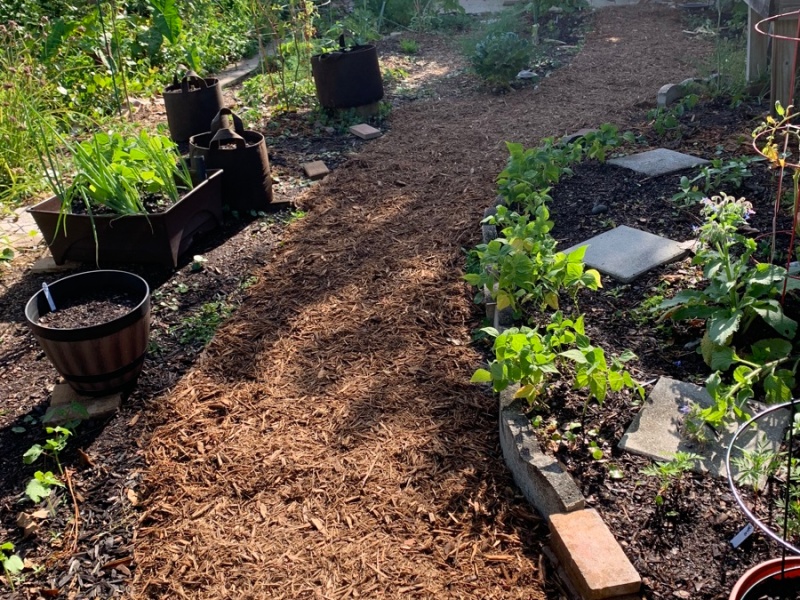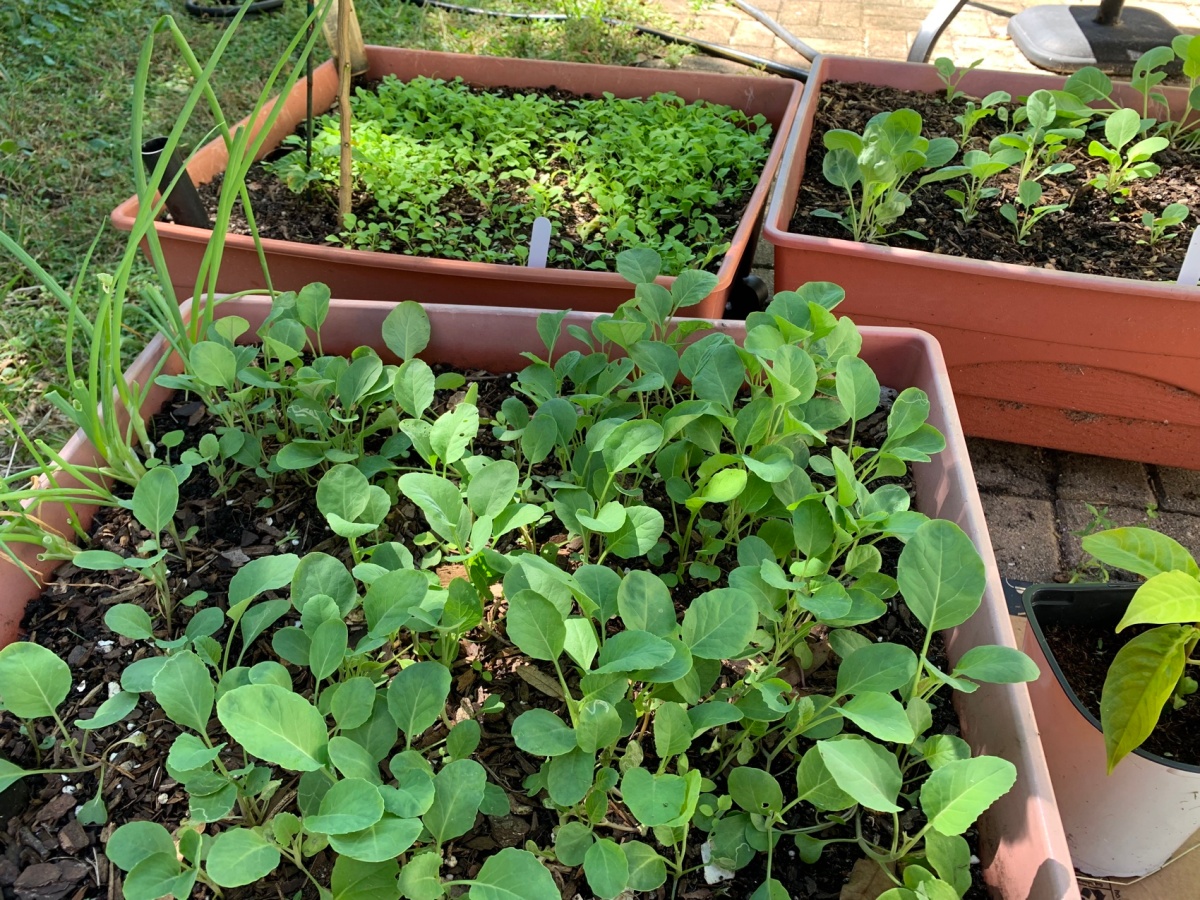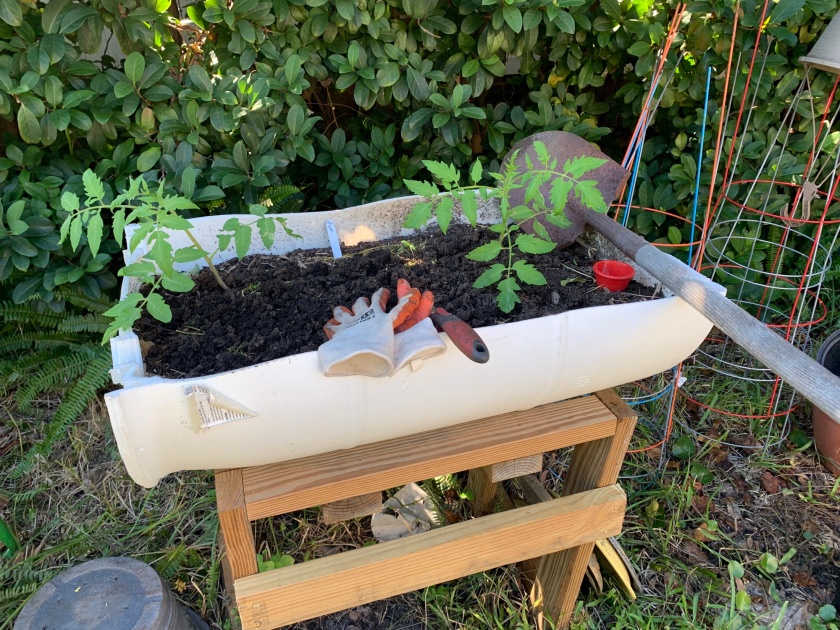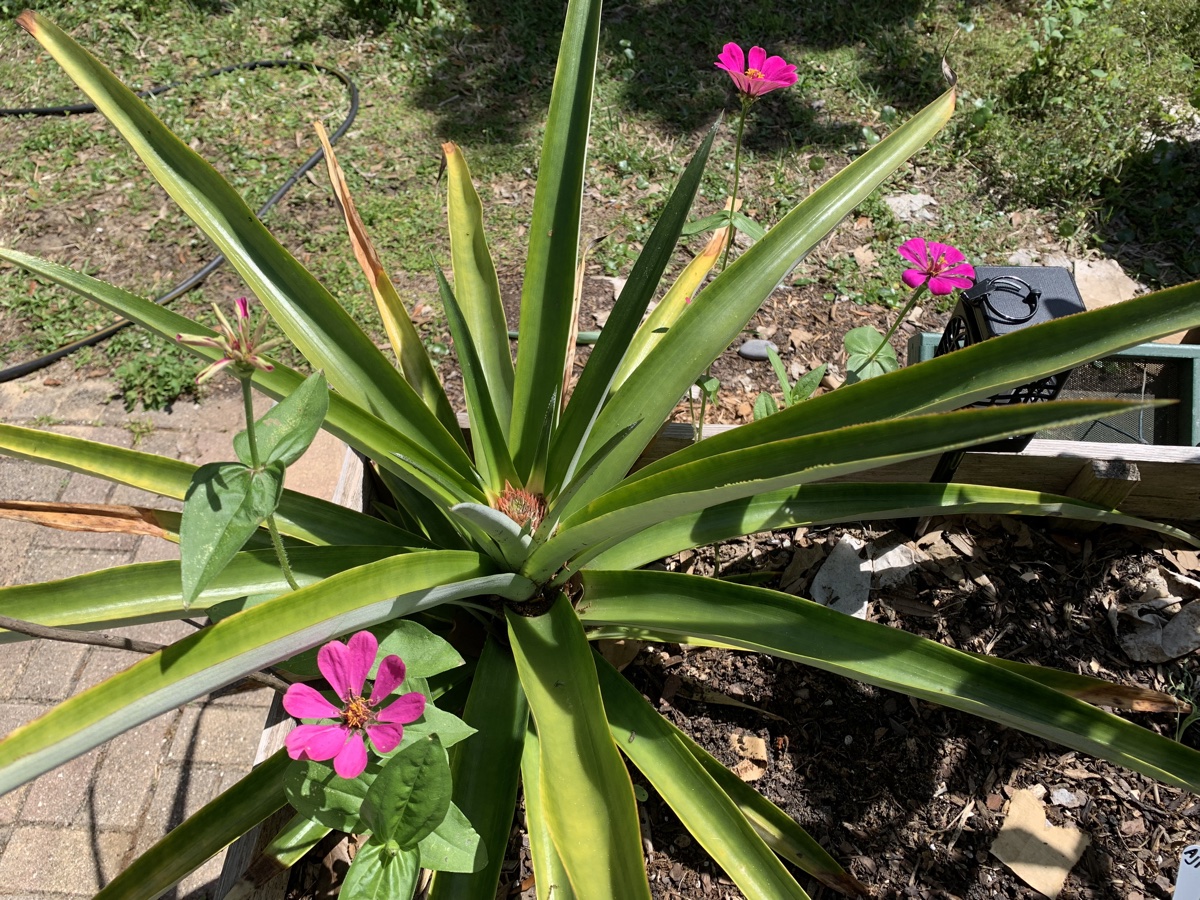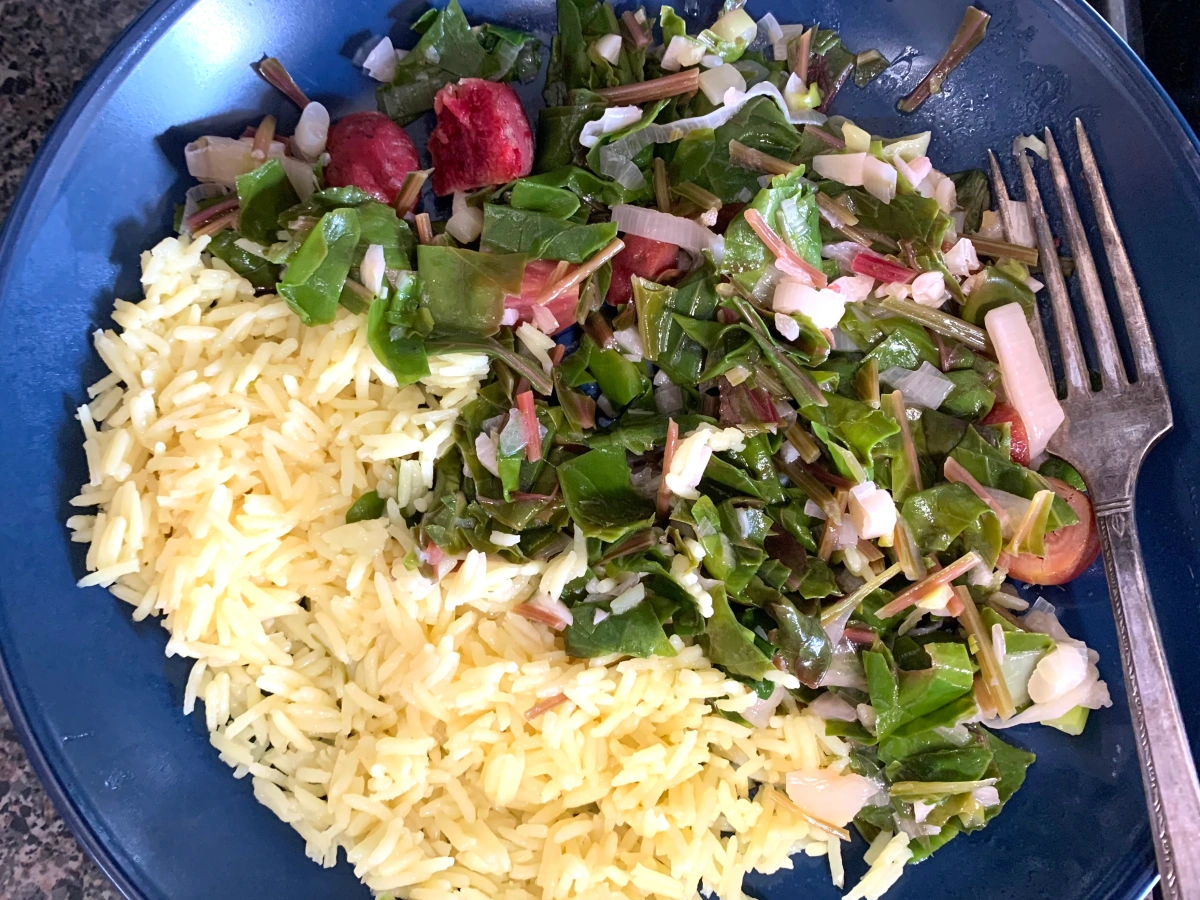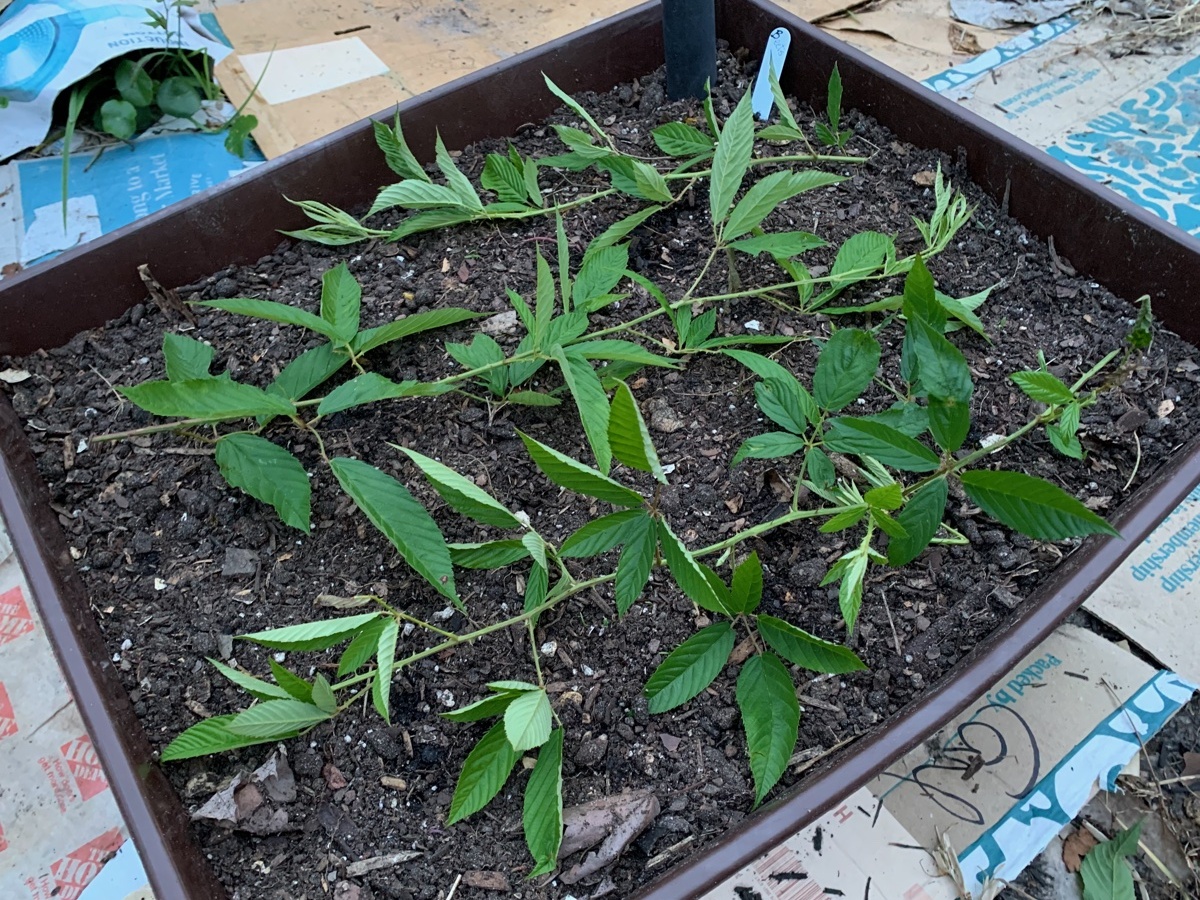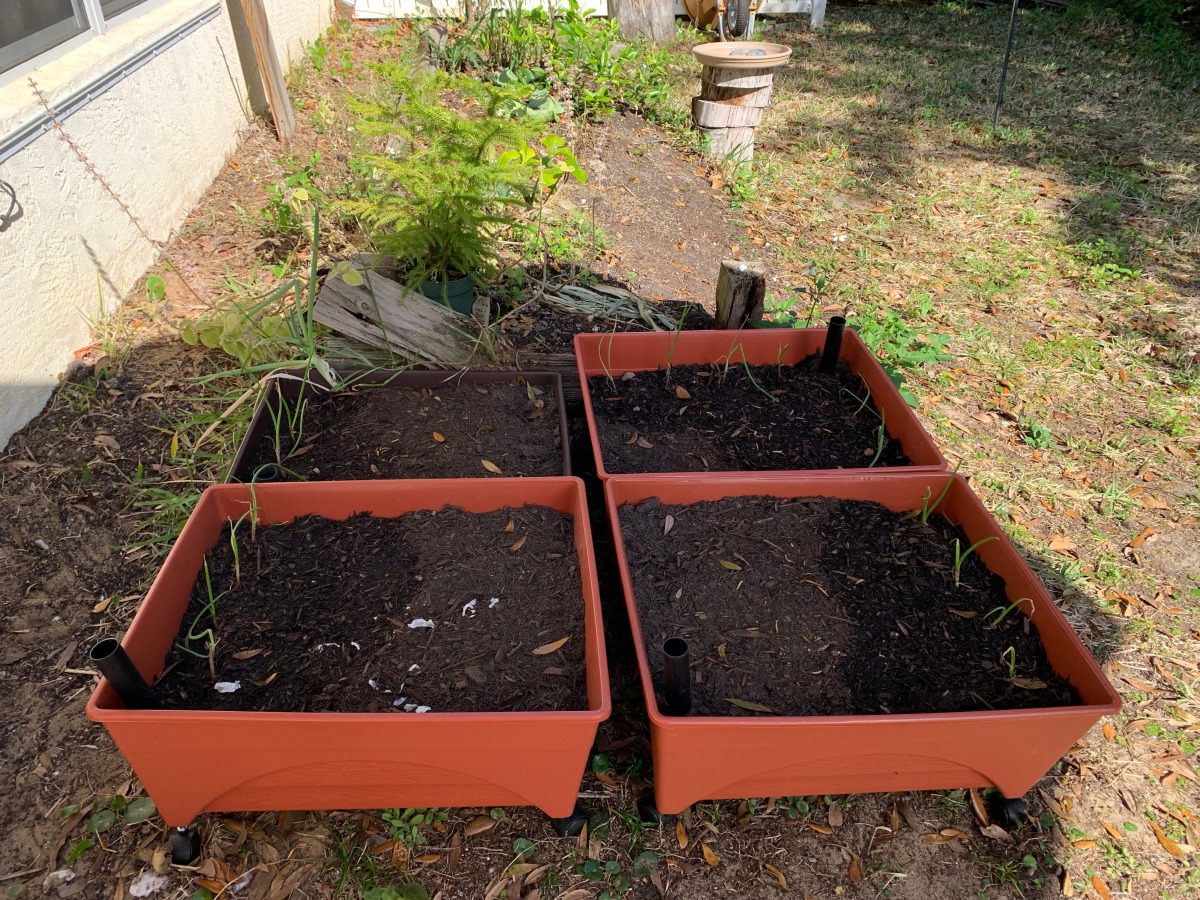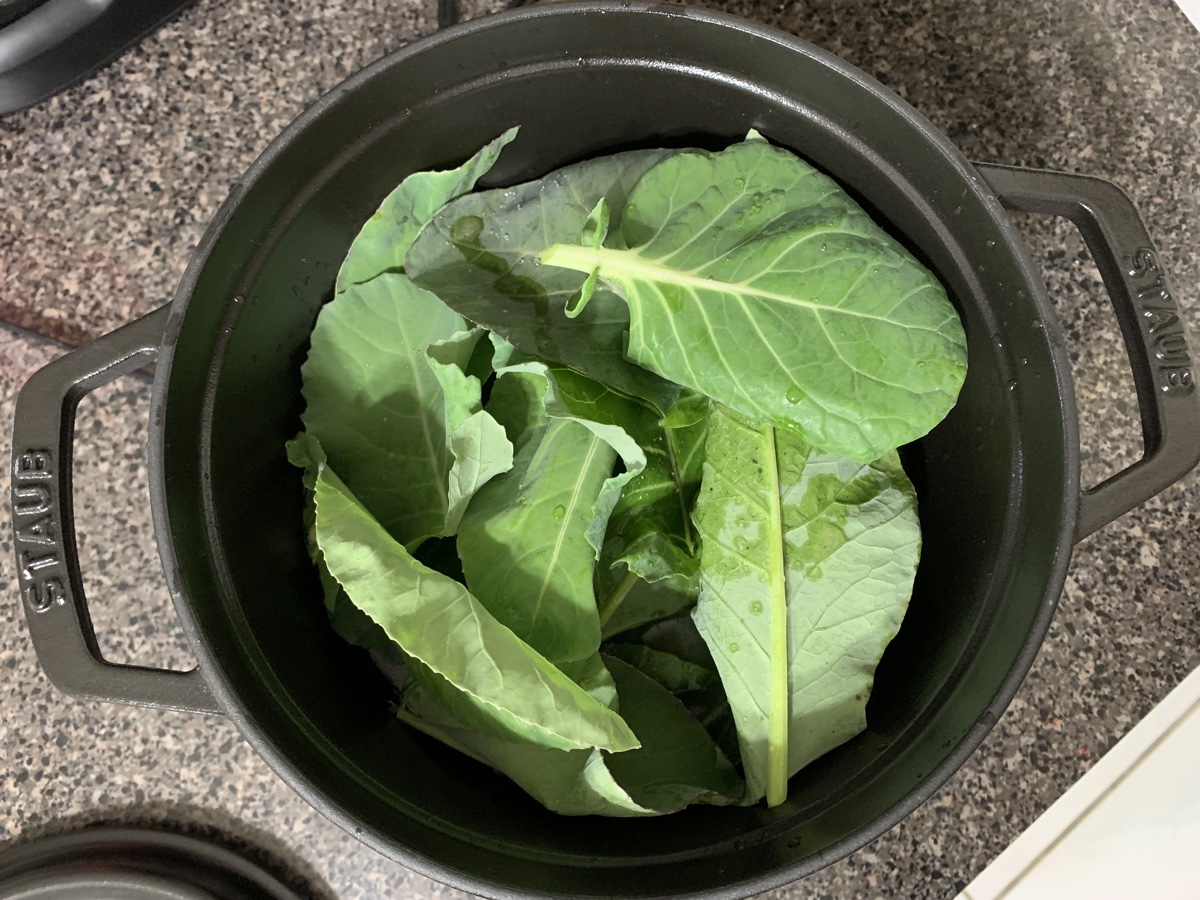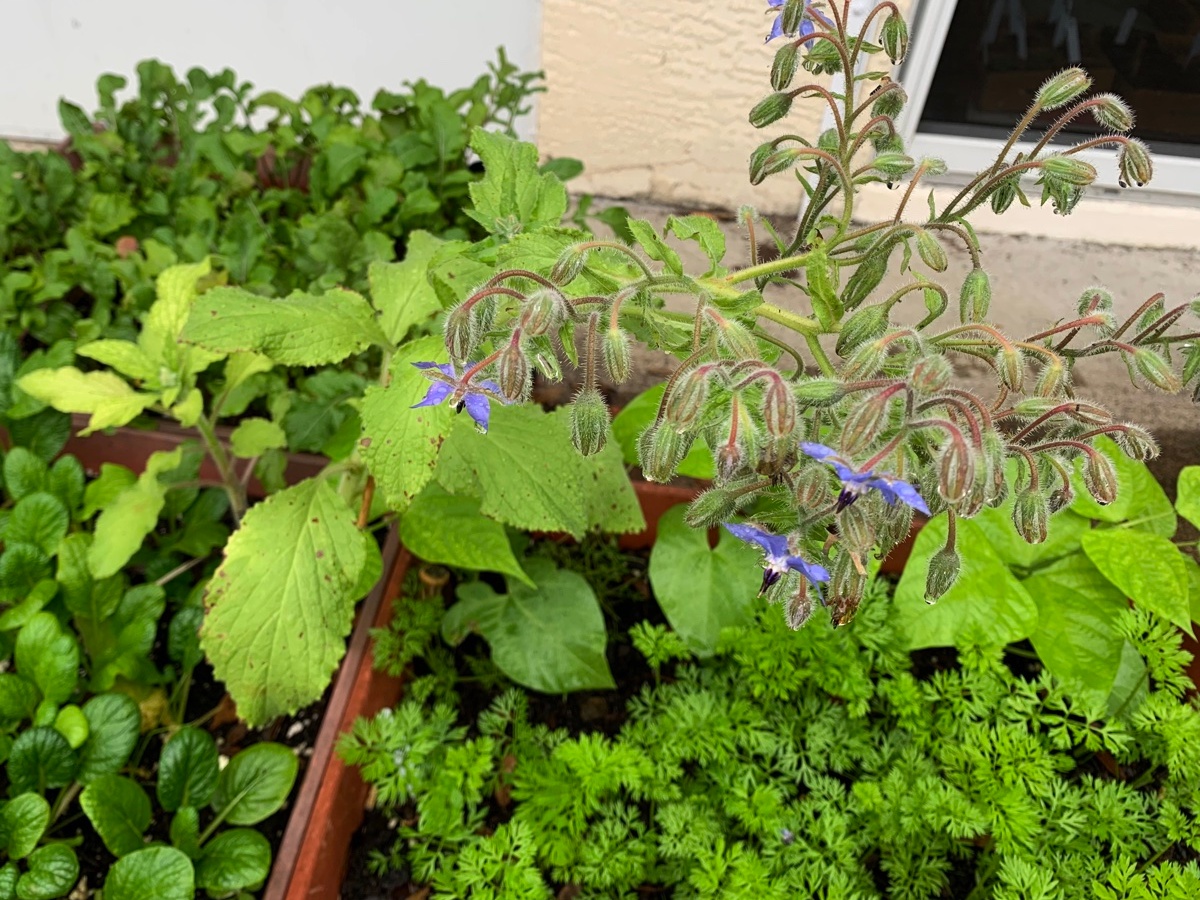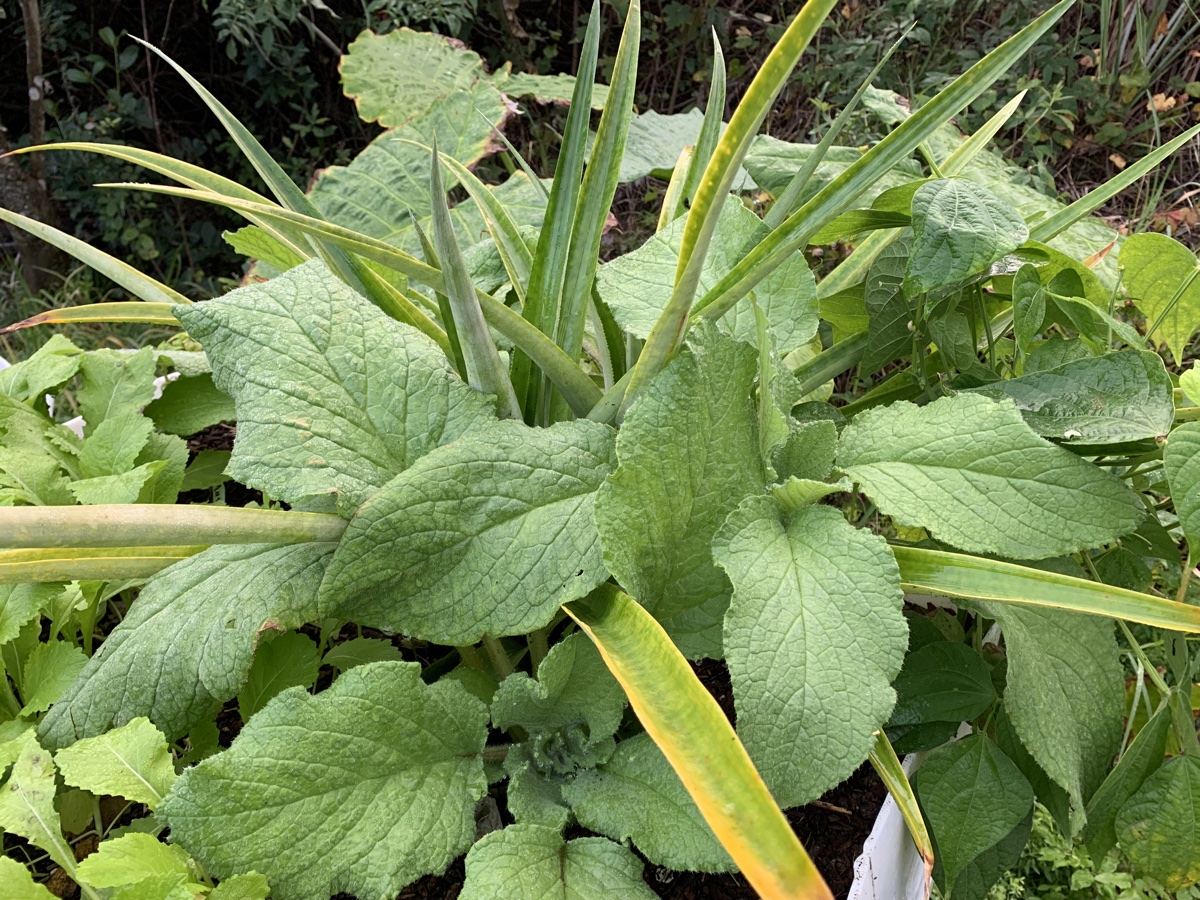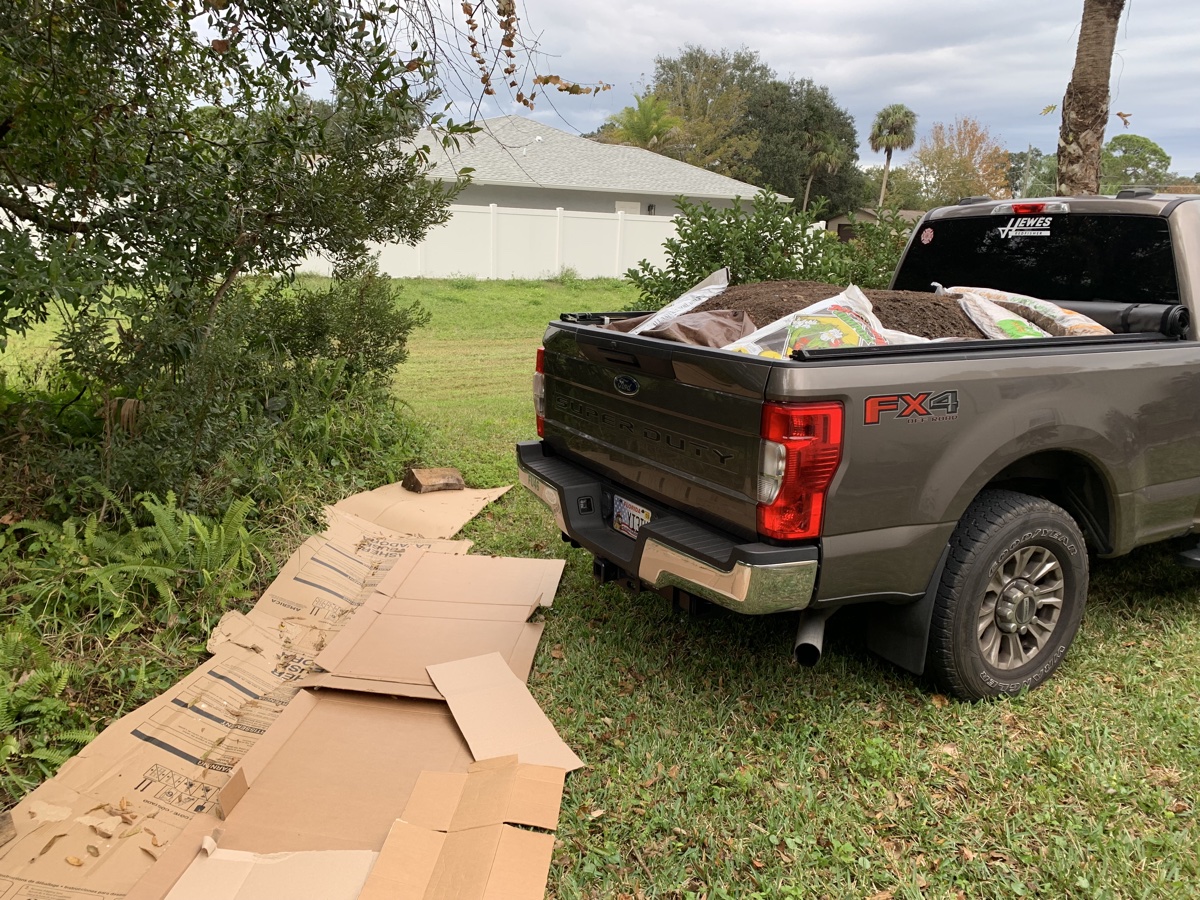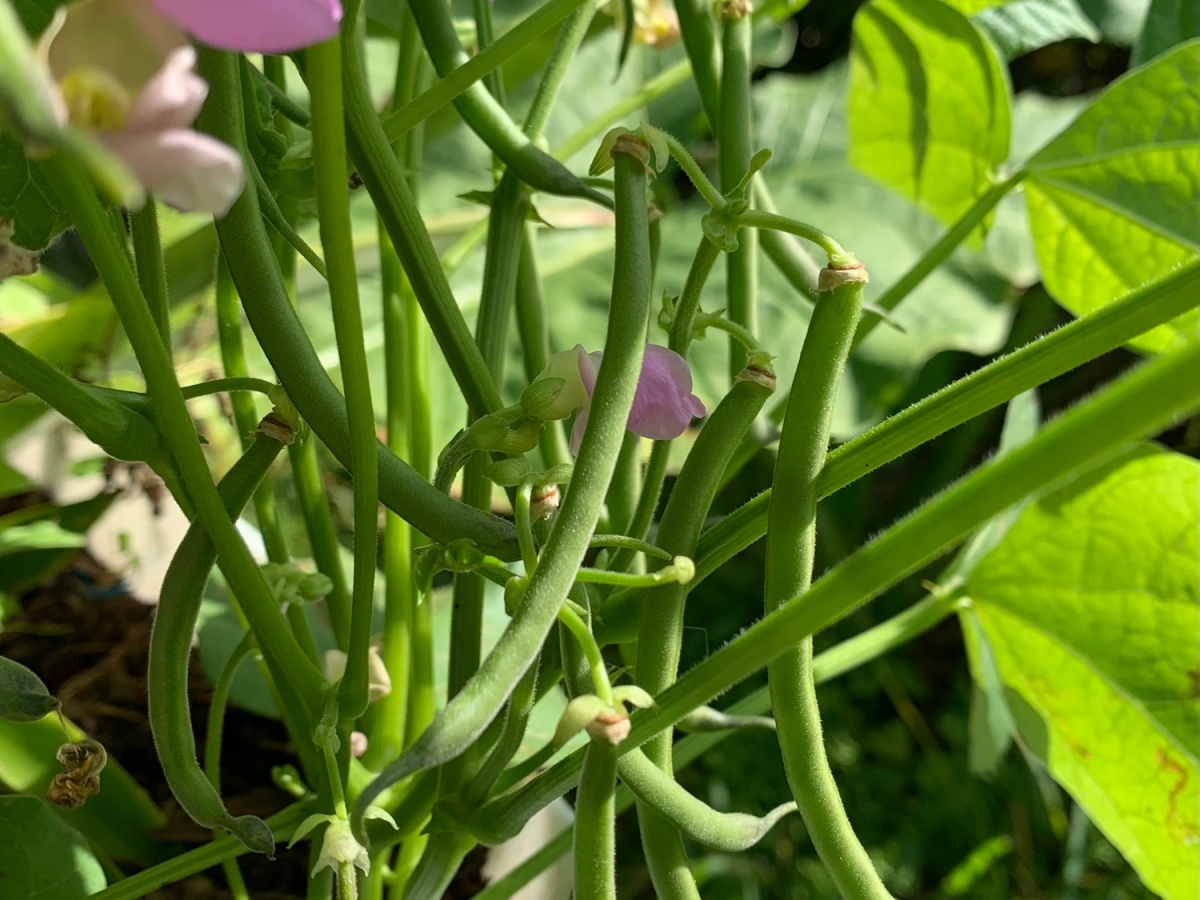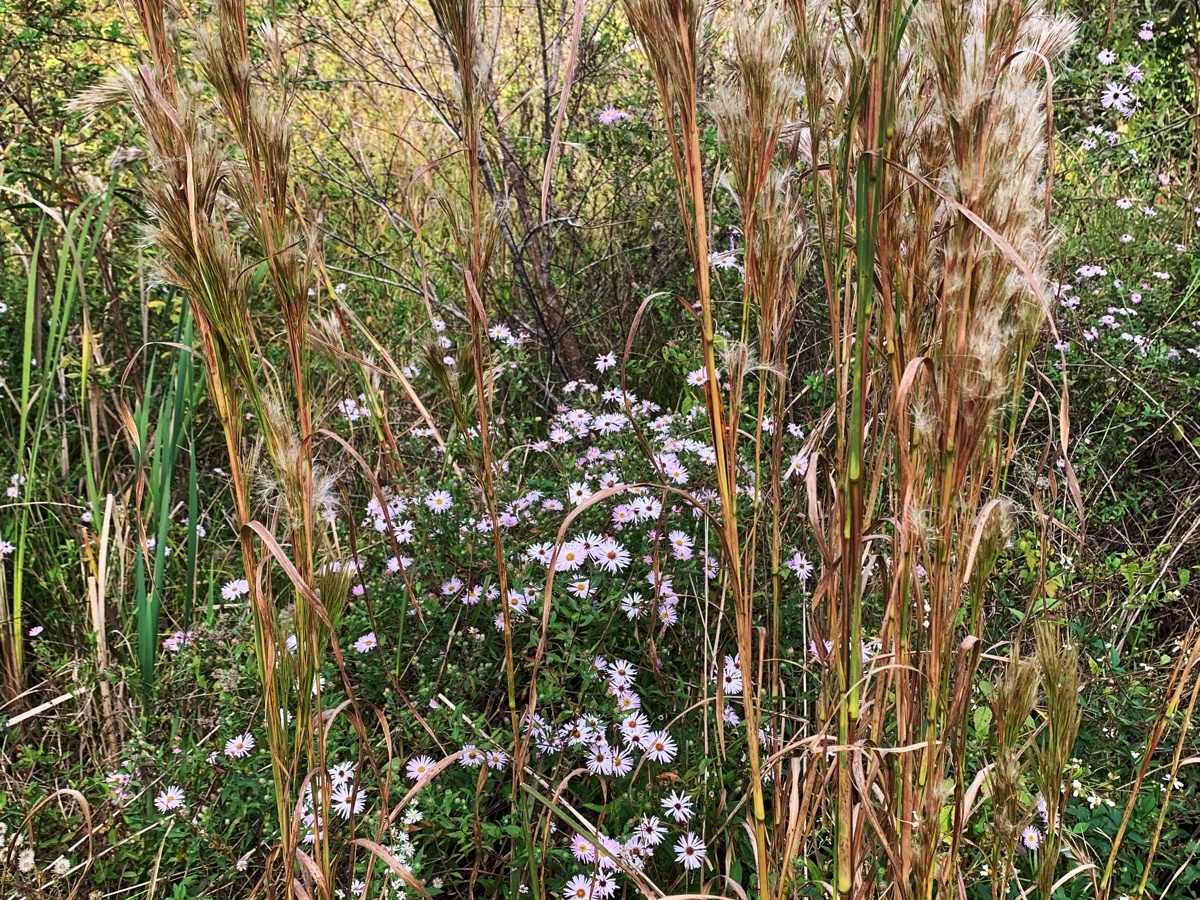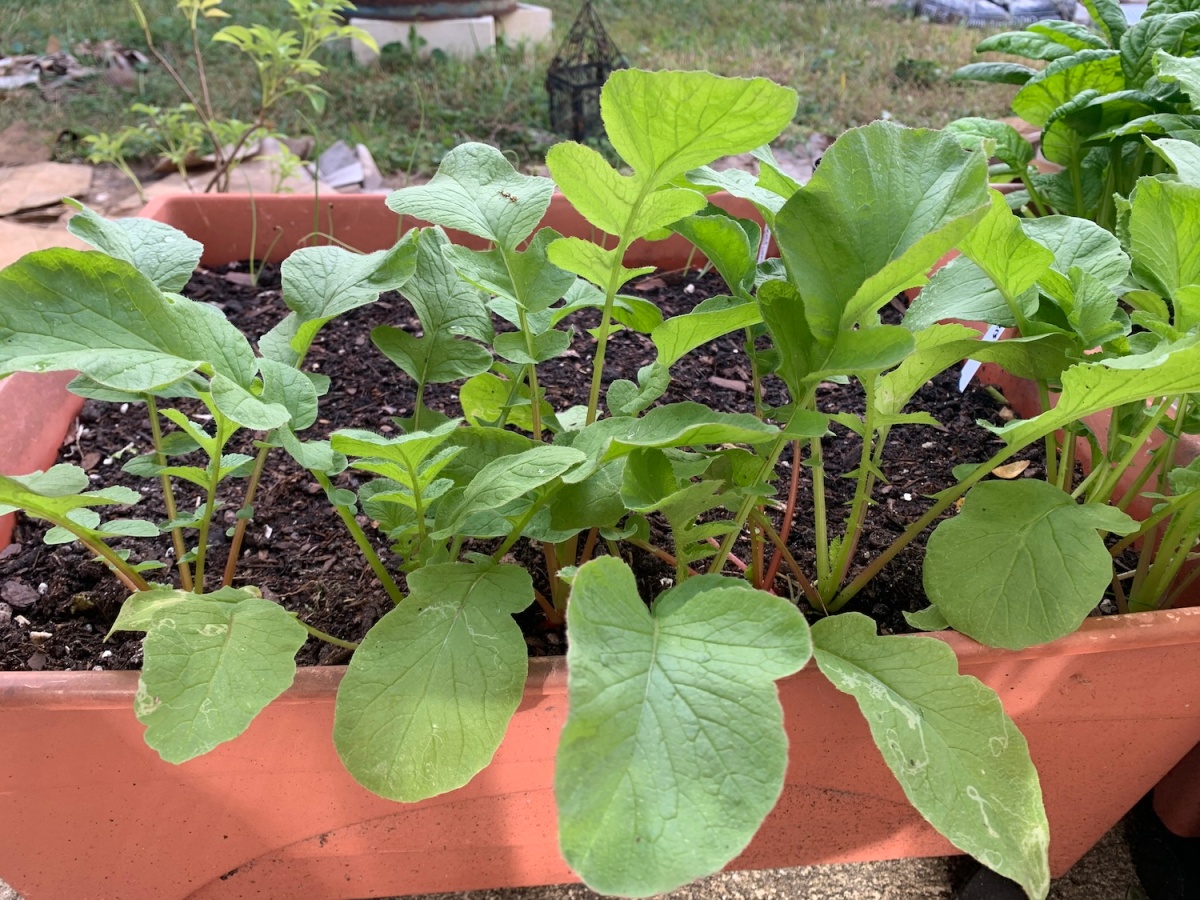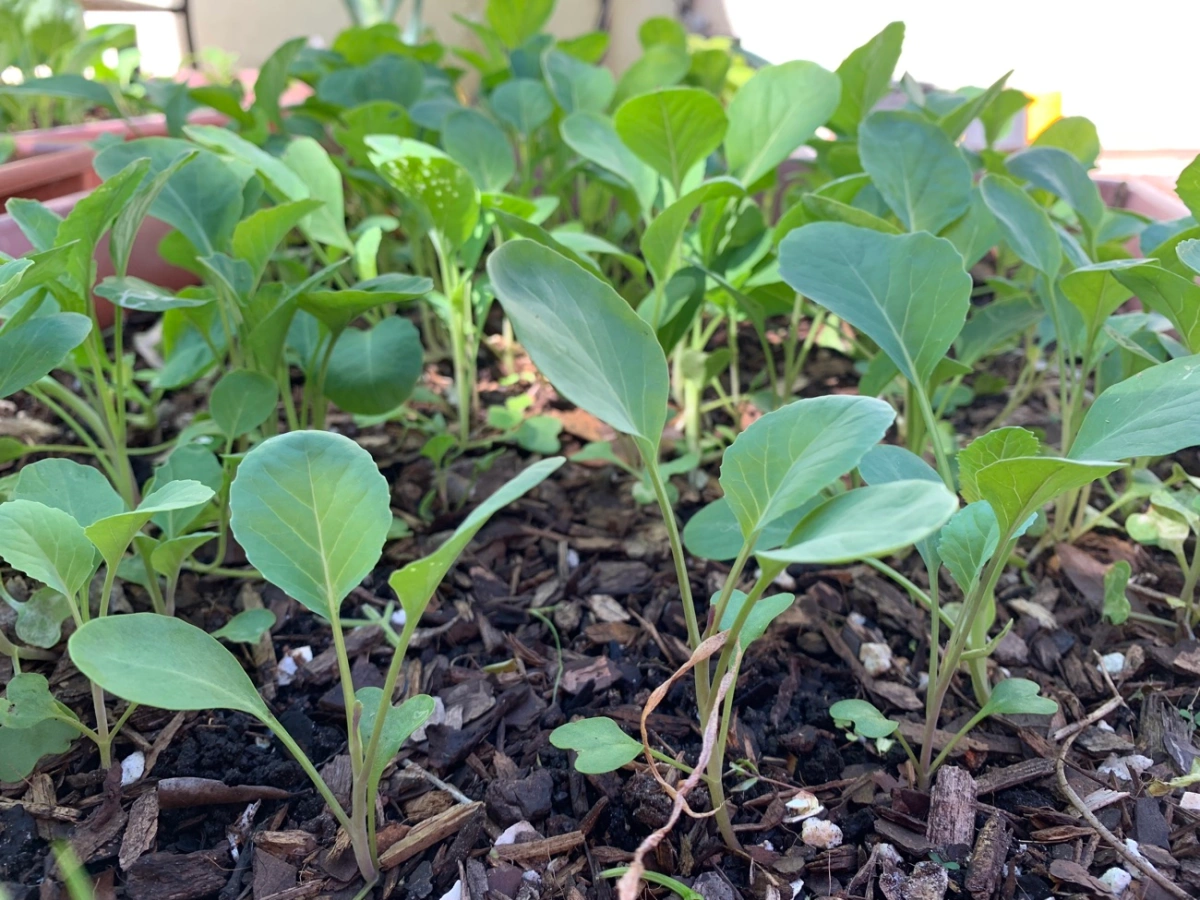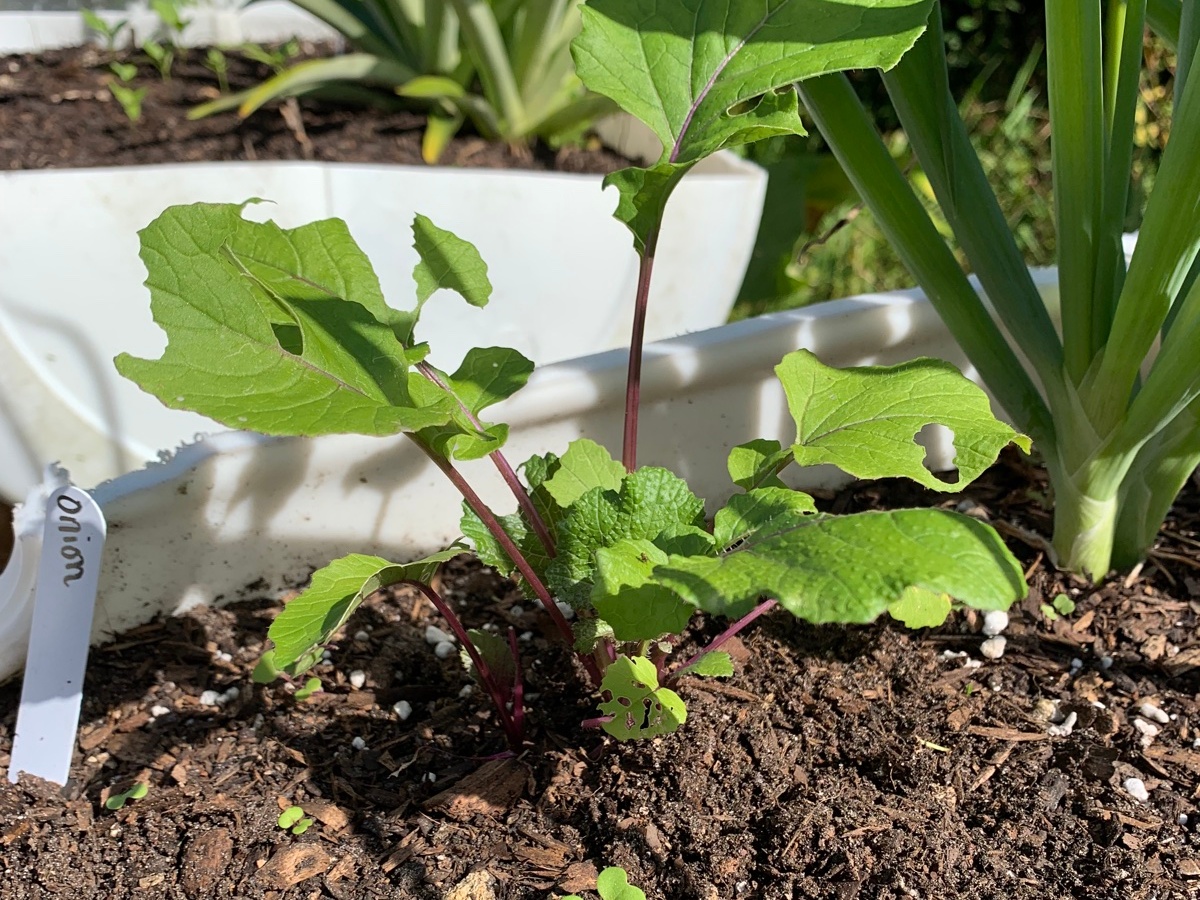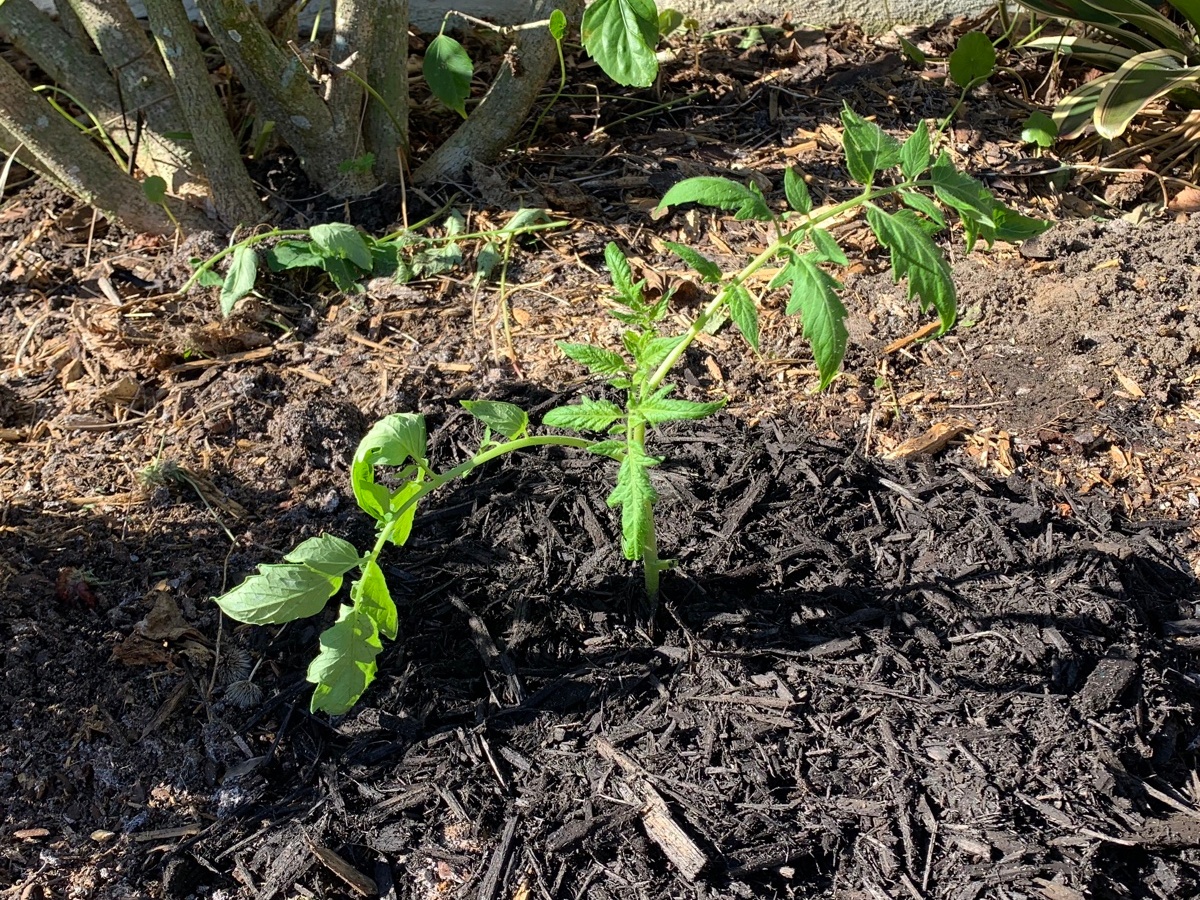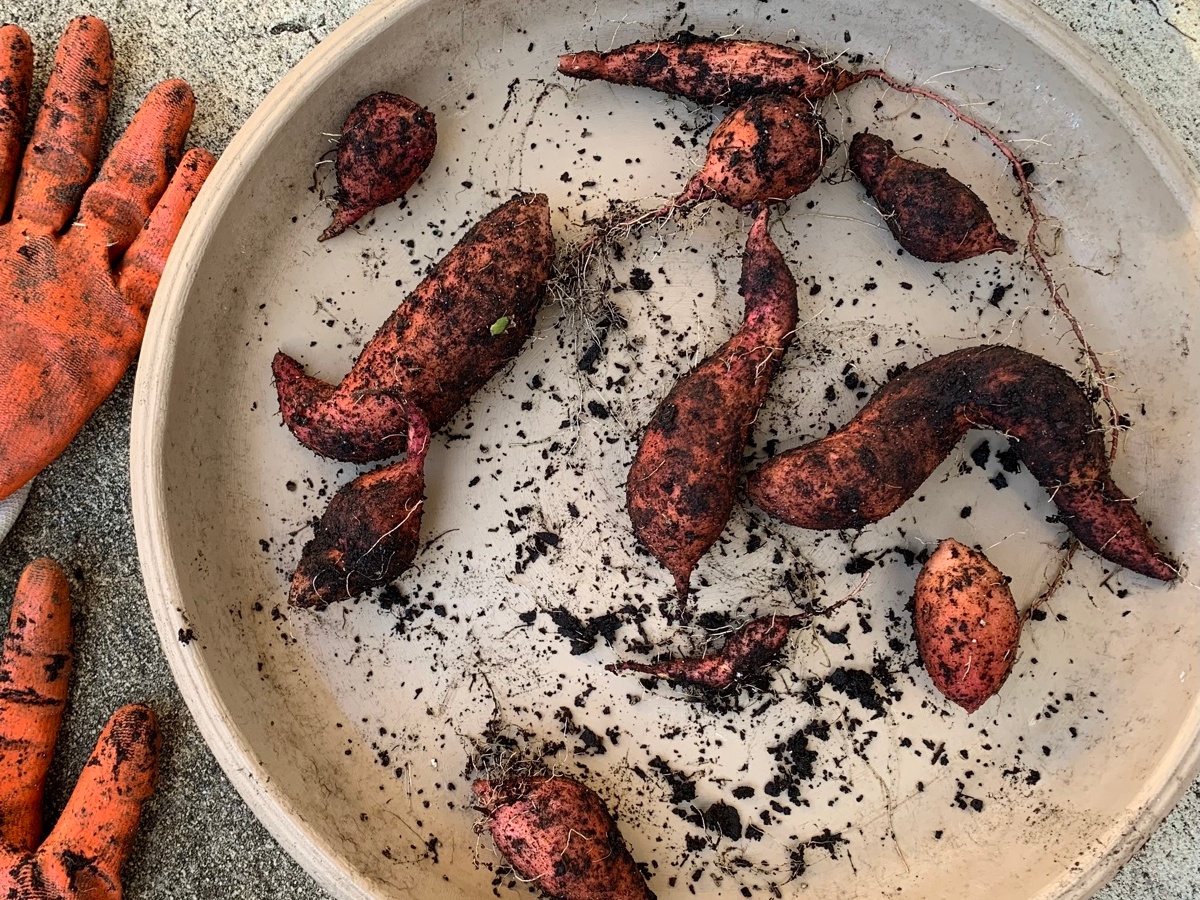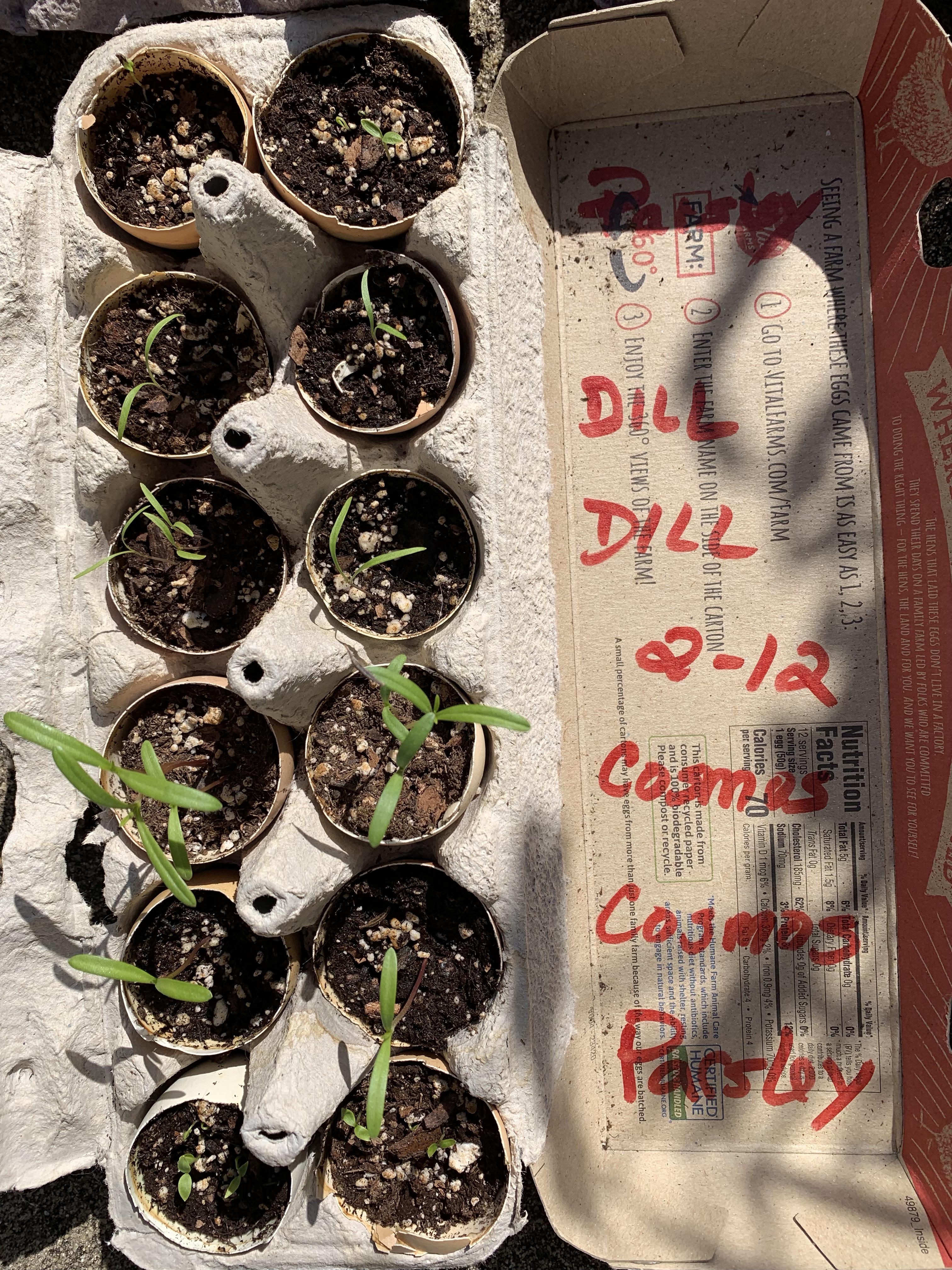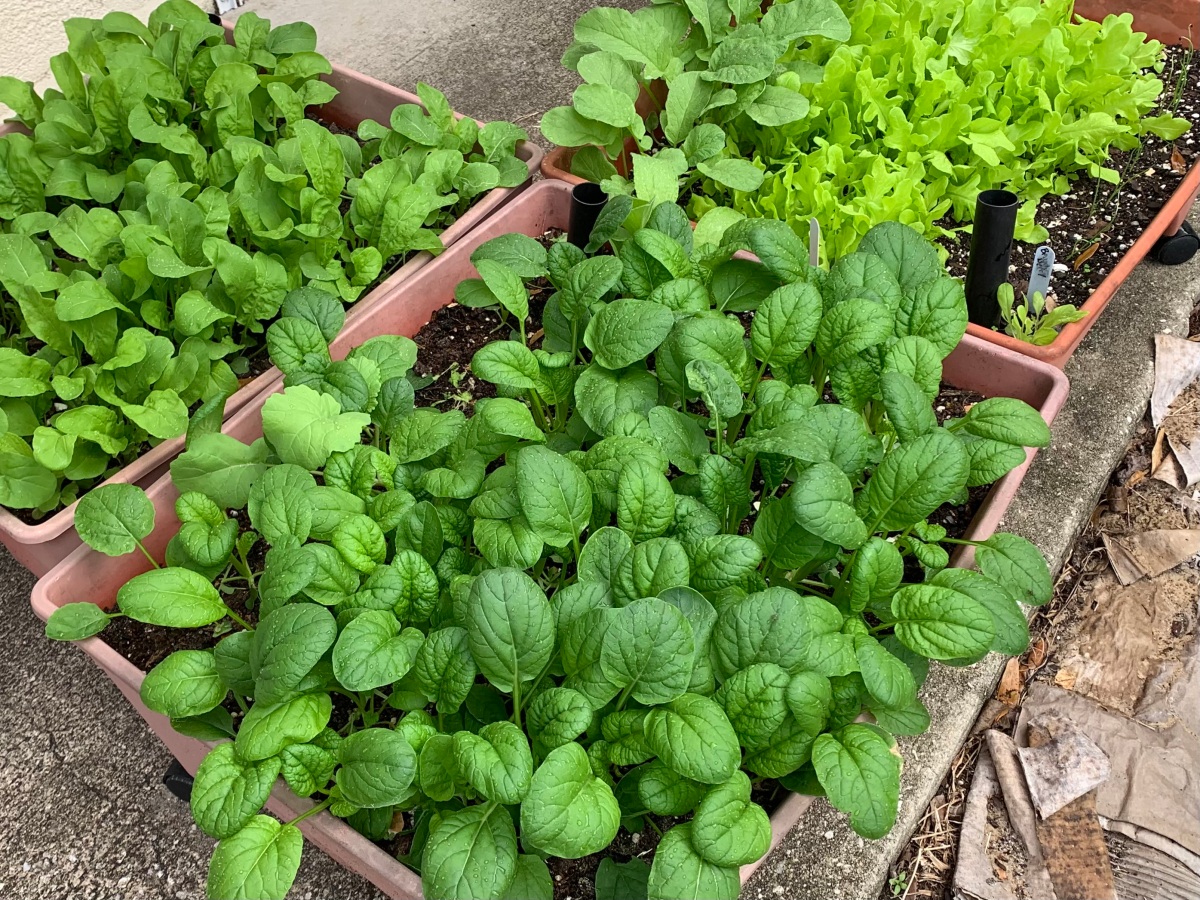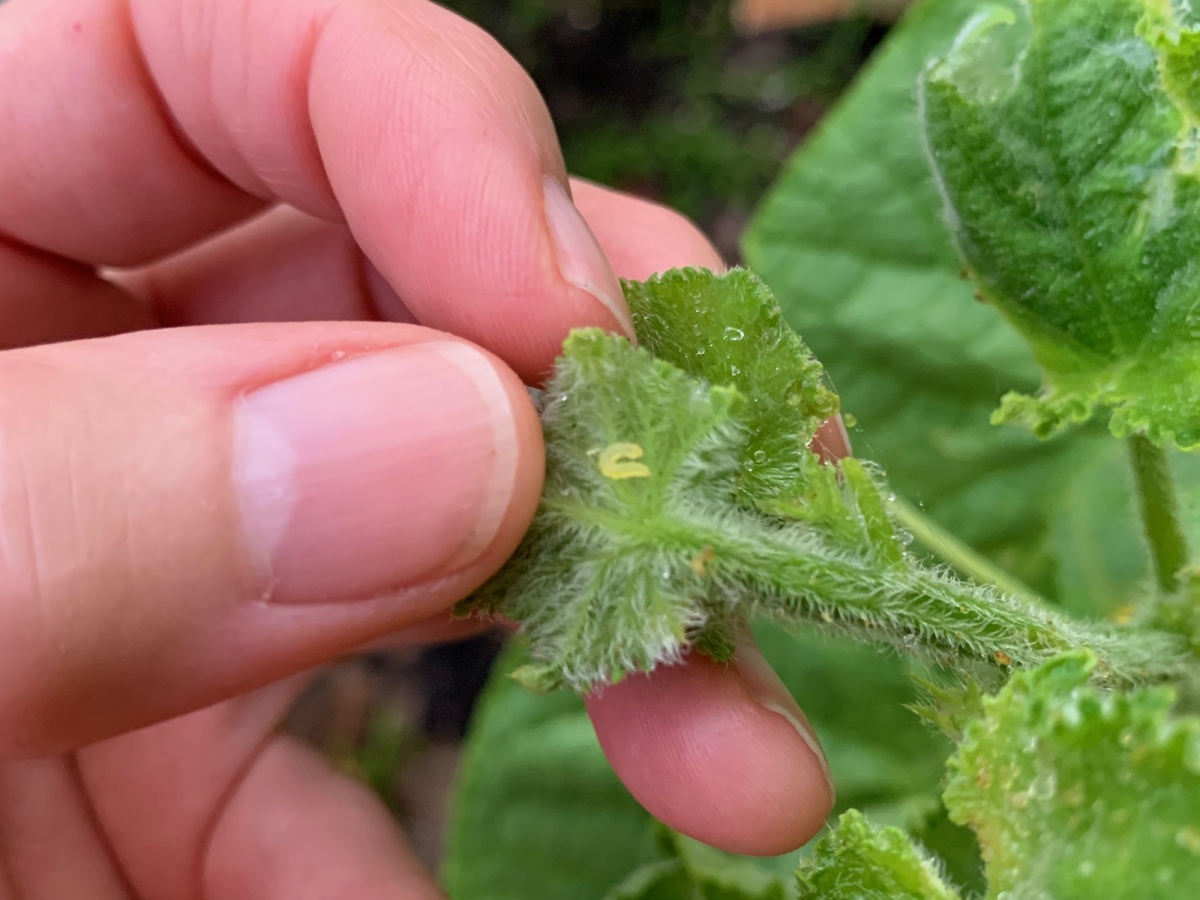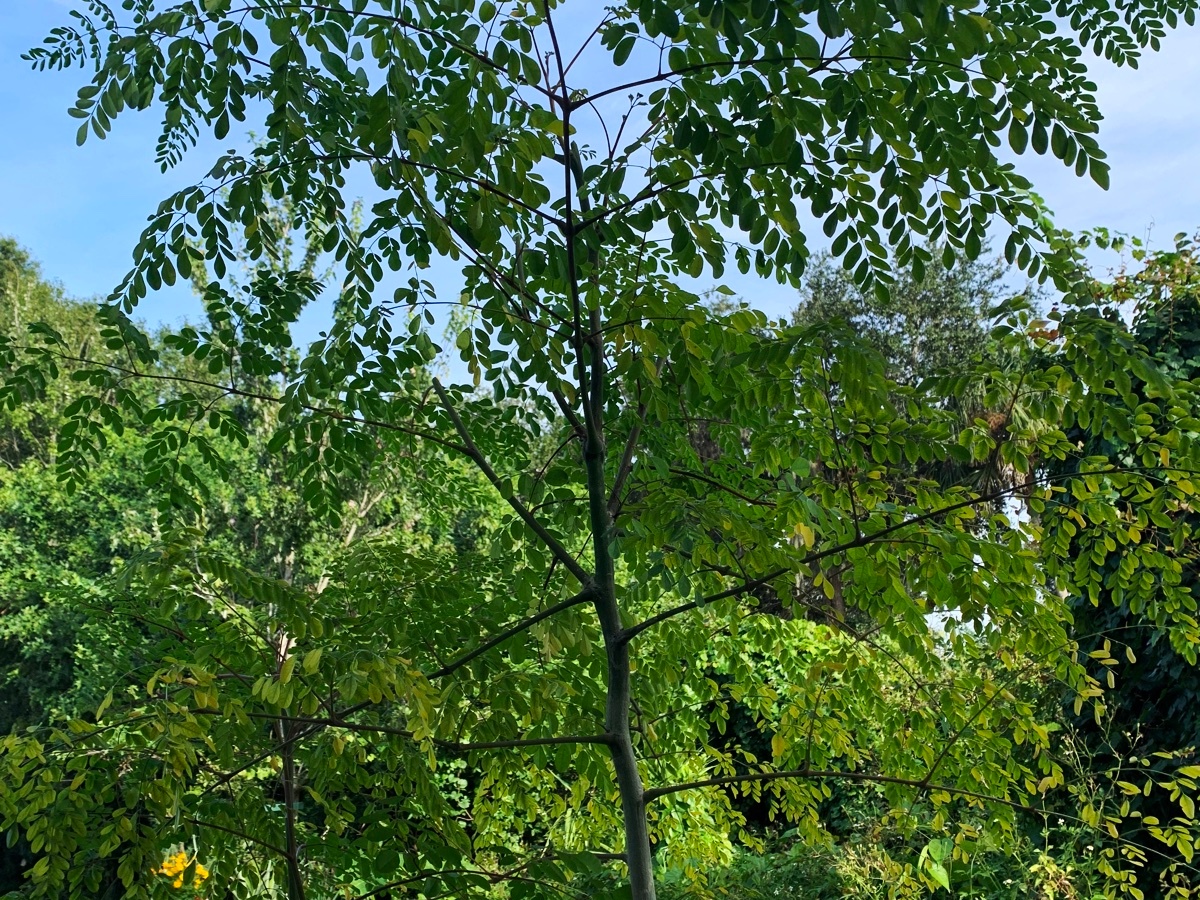This is a quick post about what is growing in the garden in March. Realistically, I can’t keep up with my blogs, photos, work, and gardening. In summer I should have more time because I won’t be going outside.
At this time of year, I am out in the yard most mornings. There has been planting to be done and I still have a few potted plants that need to find a home in the dirt.
Pineapple
Pineapples are easy to grow here, but they take years to create a new pineapple. I had forgotten how much space they take up while growing, and planted them in a couple of my raised beds! Now there is no room for other crops.
This pineapple is finally having a baby! It will grow up out of the center and become a tiny pineapple. After – not sure how long – It can be harvested.
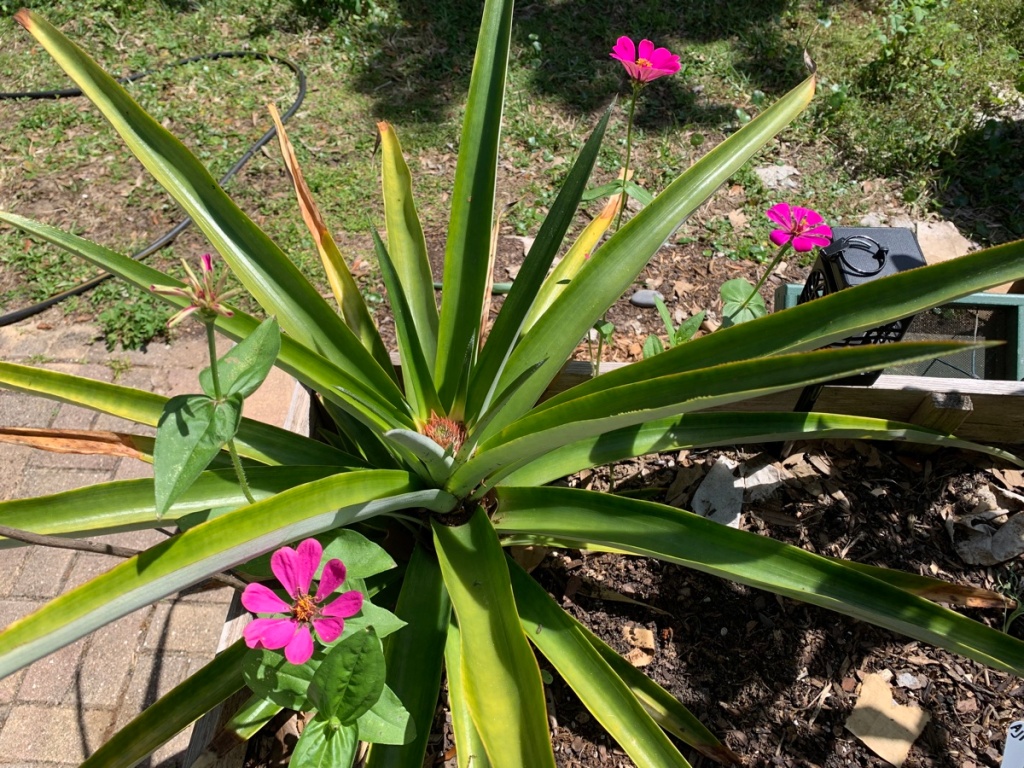
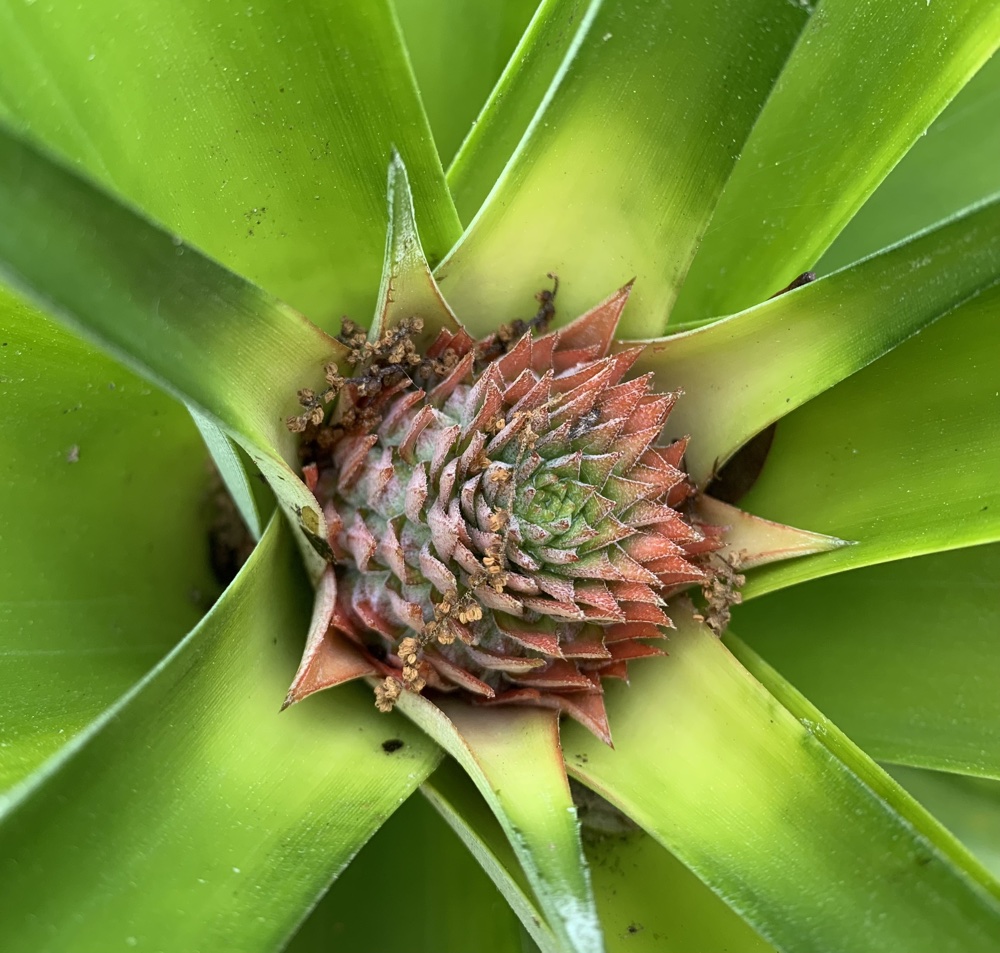
Blueberries
I purchased this blueberry plant on a whim… without any idea about growing it, or where I would put it in my small yard. Blueberries are acid loving plants and I’ve been trying to keep it happy. About a month ago it began to get loads of white flowers and now I have tons of little blueberries – still green.
Either the raccoons will get them, or I might have a tiny crop for myself! (I’m hoping the raccoons won’t realize it’s something edible.)

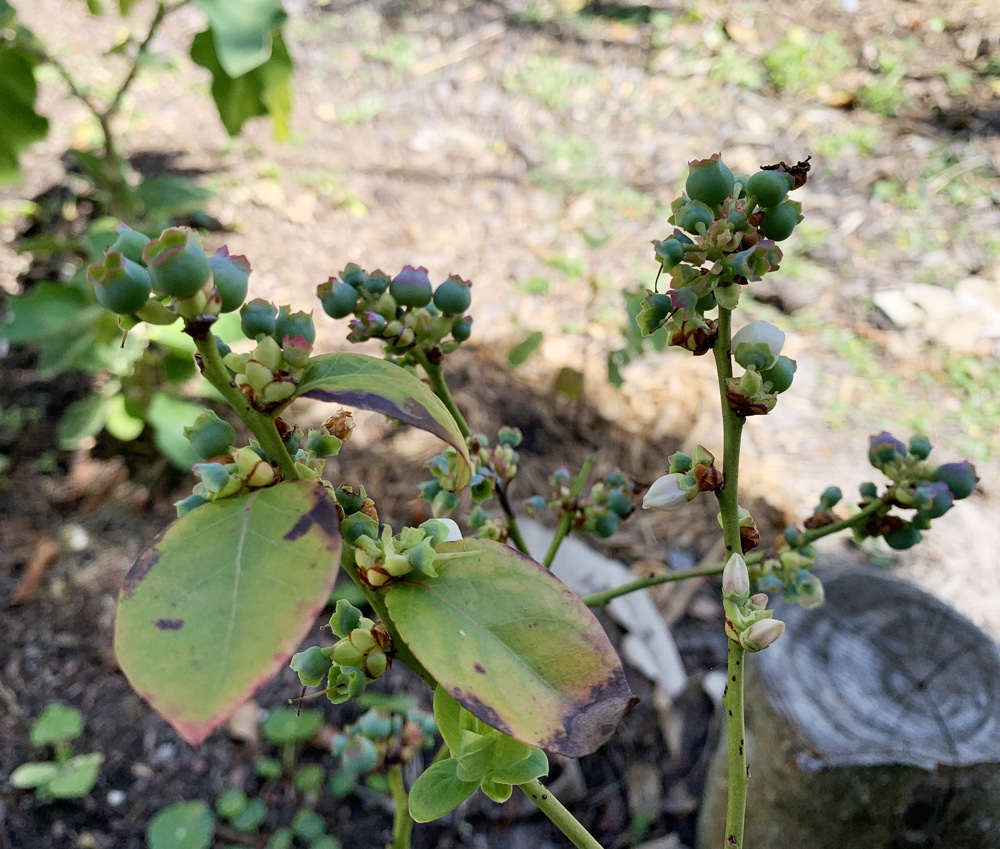
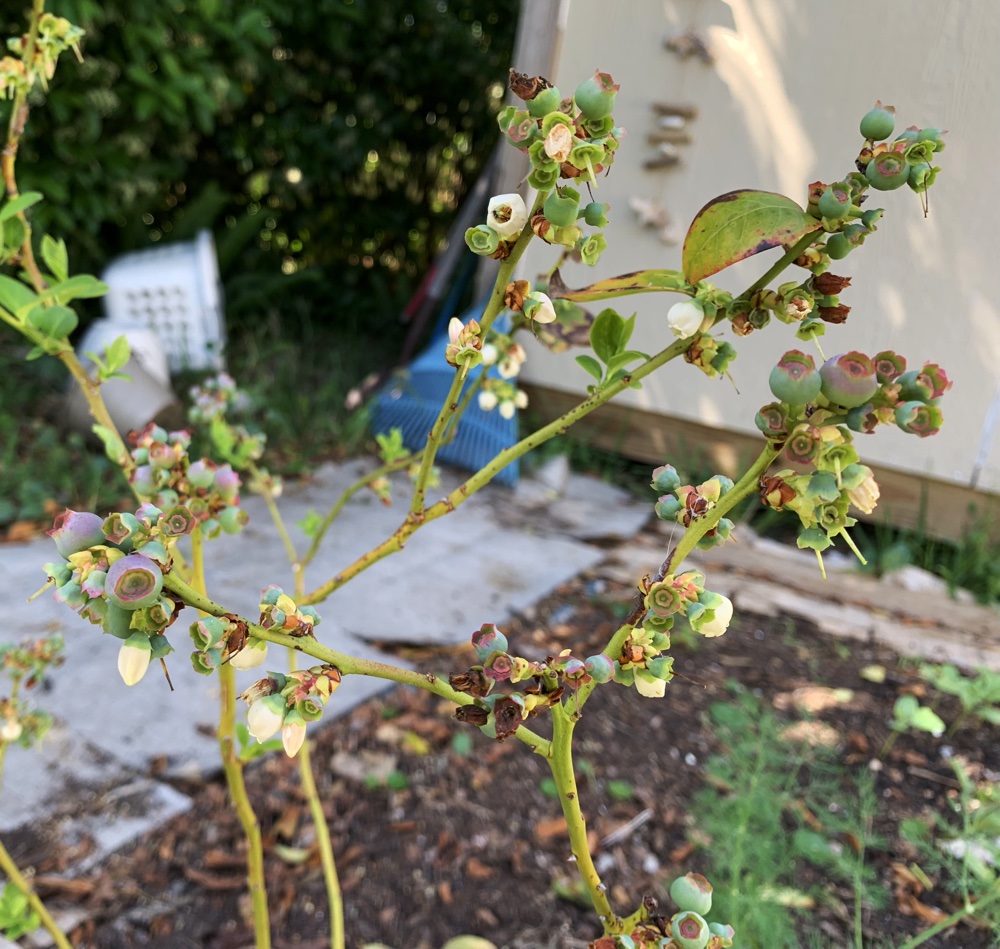
Gone to Seed
I like to let some of the produce go to seed. This is mainly for the bees. For instance, the Hon Tsai flowering broccoli and the regular broccoli have pretty stalks of yellow flowers.
For a while, every morning a big black bee would come to the broccoli flowers. Other bees, like the one below, were also regulars.
I plan to grow the Hon Tsai variety next winter, just for the flowers.
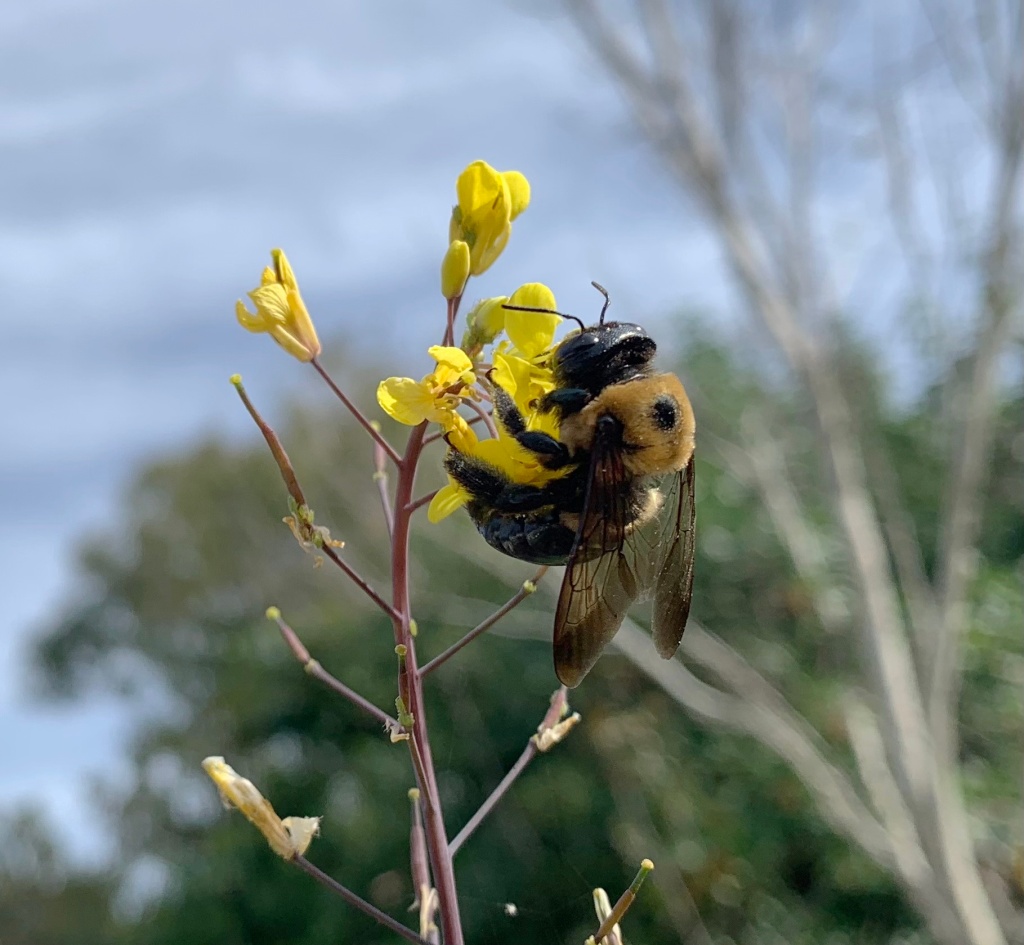
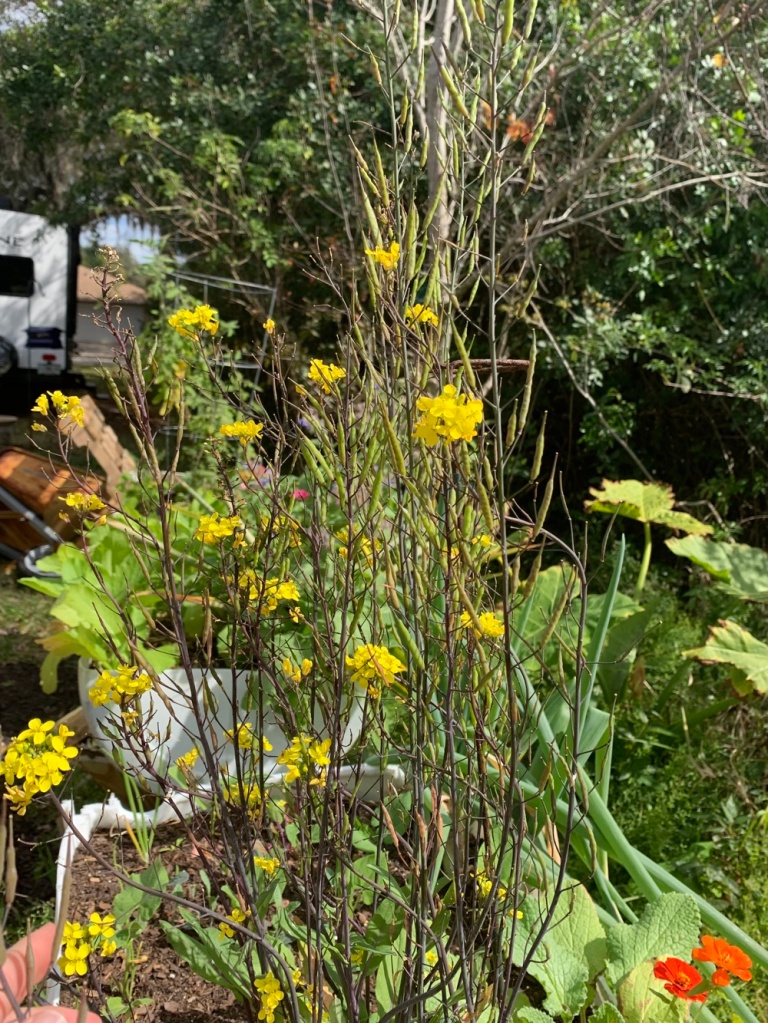
Roselle, Squash, Carrots and Okra
The spaghetti squash is a new crop for me to try. The seeds have come up nicely and the plants are taking off. Fingers crossed I will have my own squash supply.
The Roselle plants were begun with seeds over the winter. They got bugs and a few seedlings died. The ones that kept growing have now all been planted in the yard. If you are wondering what Roselle is, check it out here: IFAS / UF Gardening Solutions: Roselle.
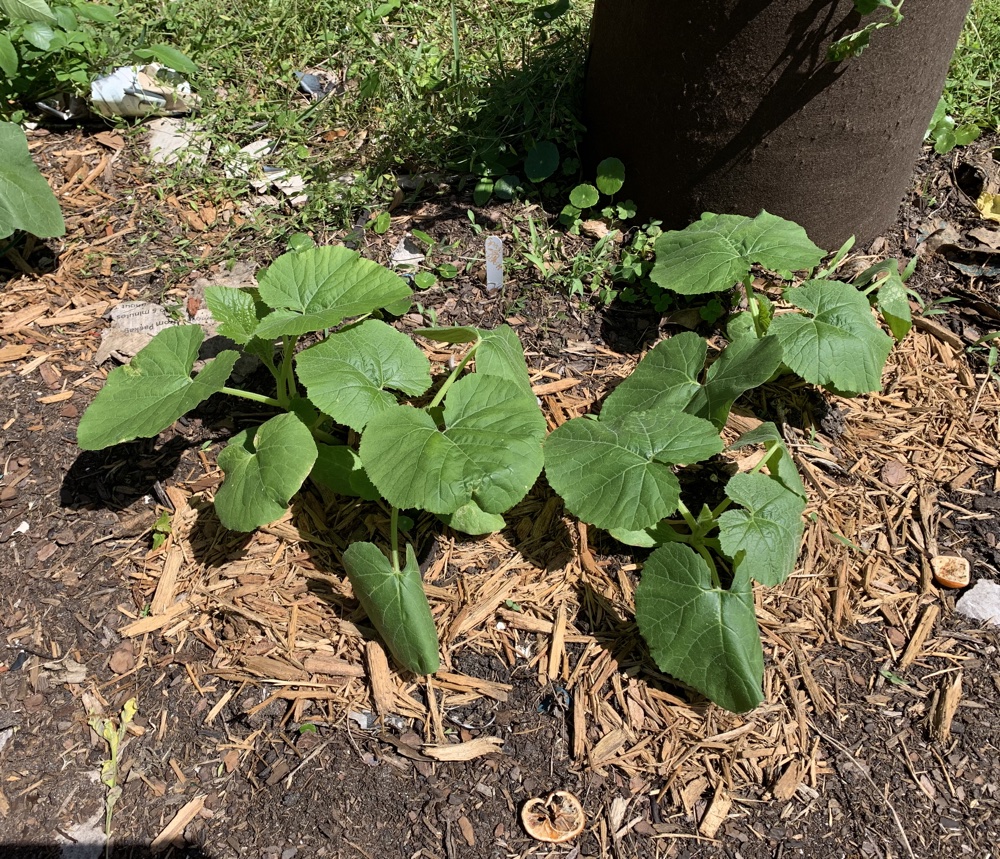
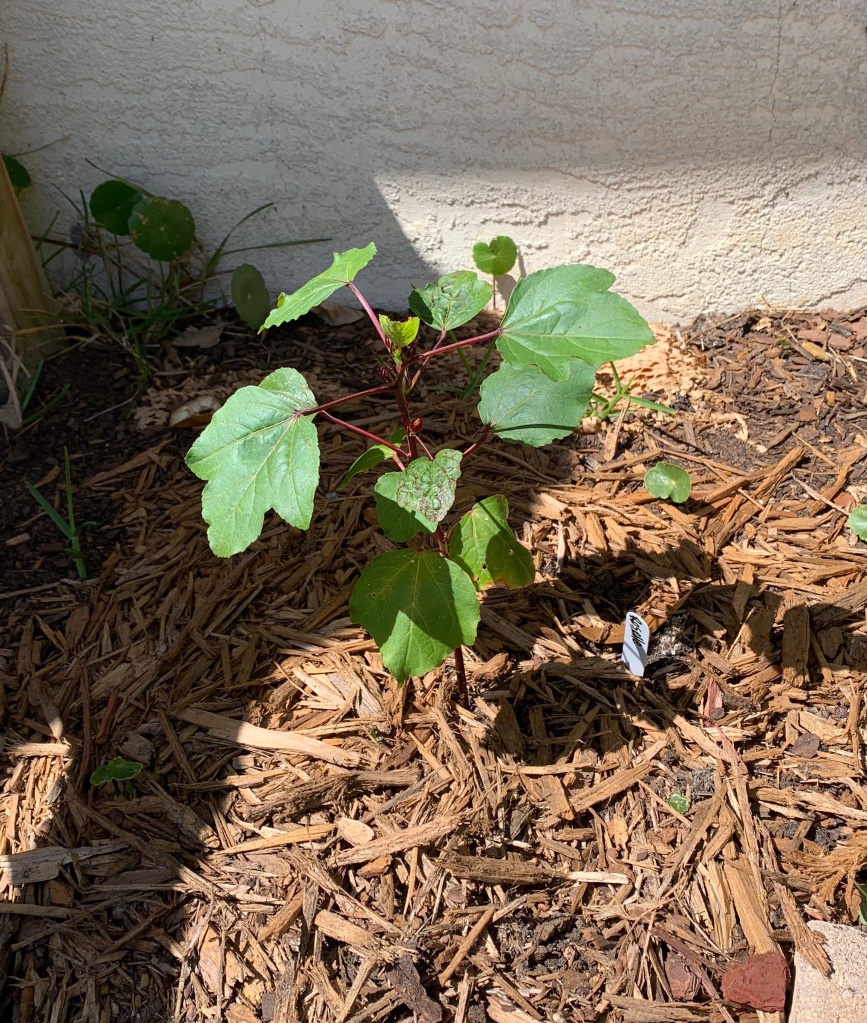

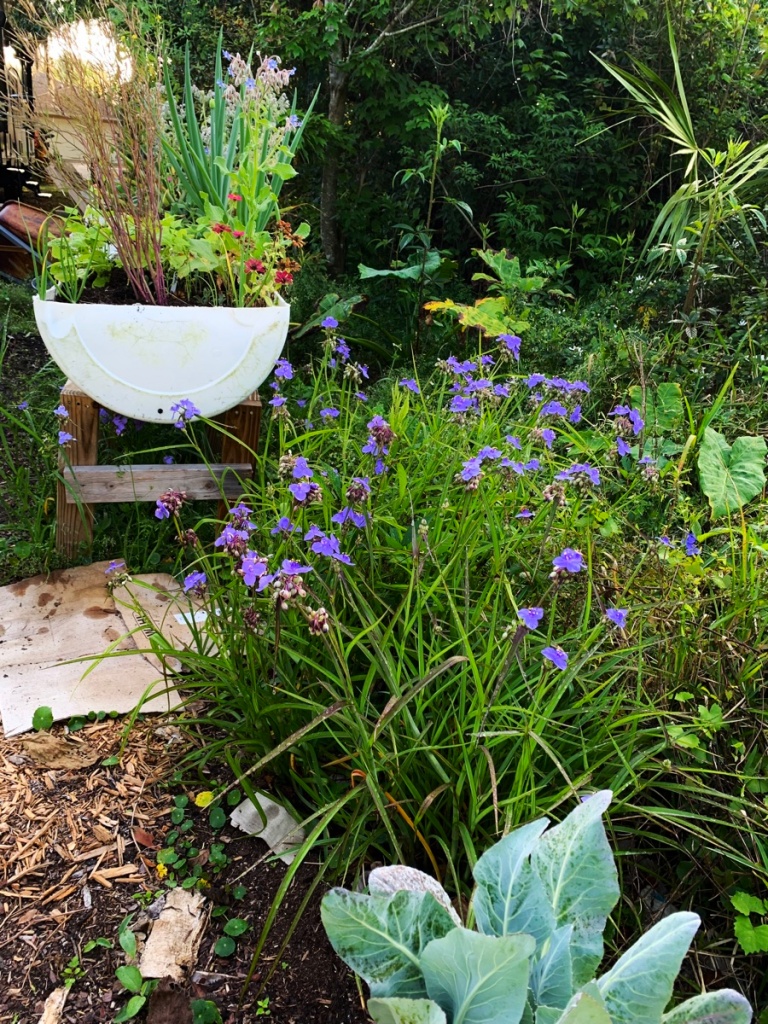
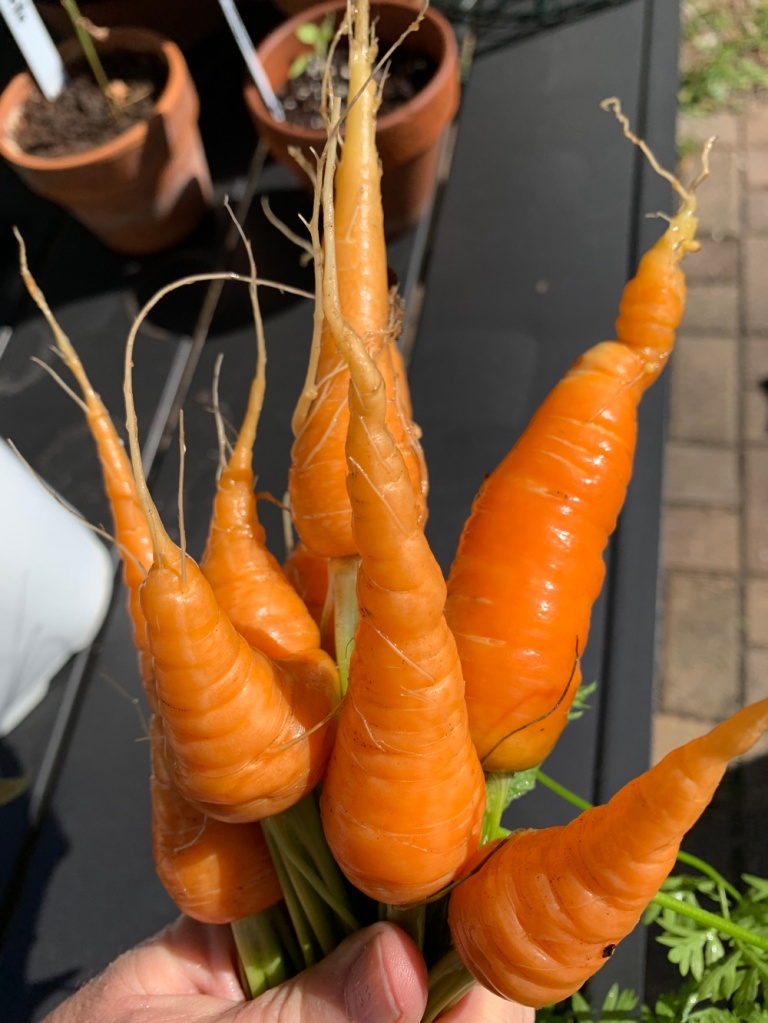
Last year I grew okra and had a hard time eating it. Bleh… yuk. I did save a pod and have now planted some of the seeds. I won’t have a lot, but I love the plants and flowers – just not the actual okra!
I’m eating carrots now… finally. They took FOREVER to grow. Scarlett Nantes and Danvers did the best for me.
Spiderwort and Other Weeds
I’ve decided to let some Spiderwort and other flowering weeds grow in the yard. The area is small, and I plan to keep it all in check. Bees really love the flowers of these “weeds” and I want to bring bees to the garden.
I’ll let them grow where they pop up as long as it’s an okay place.
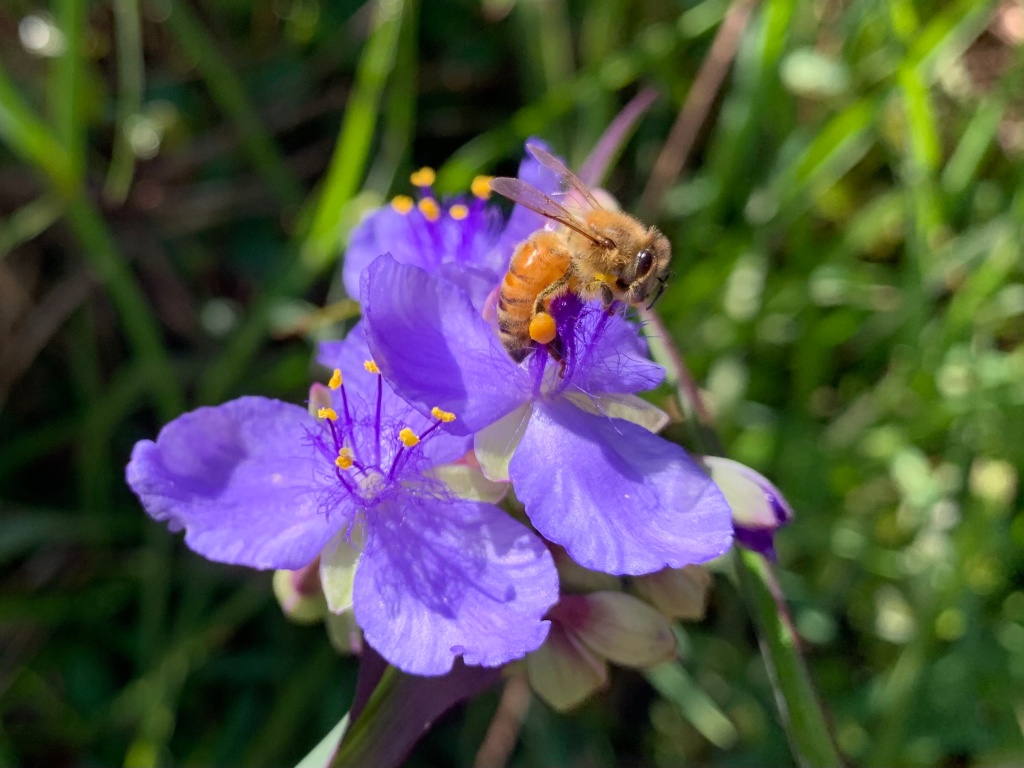
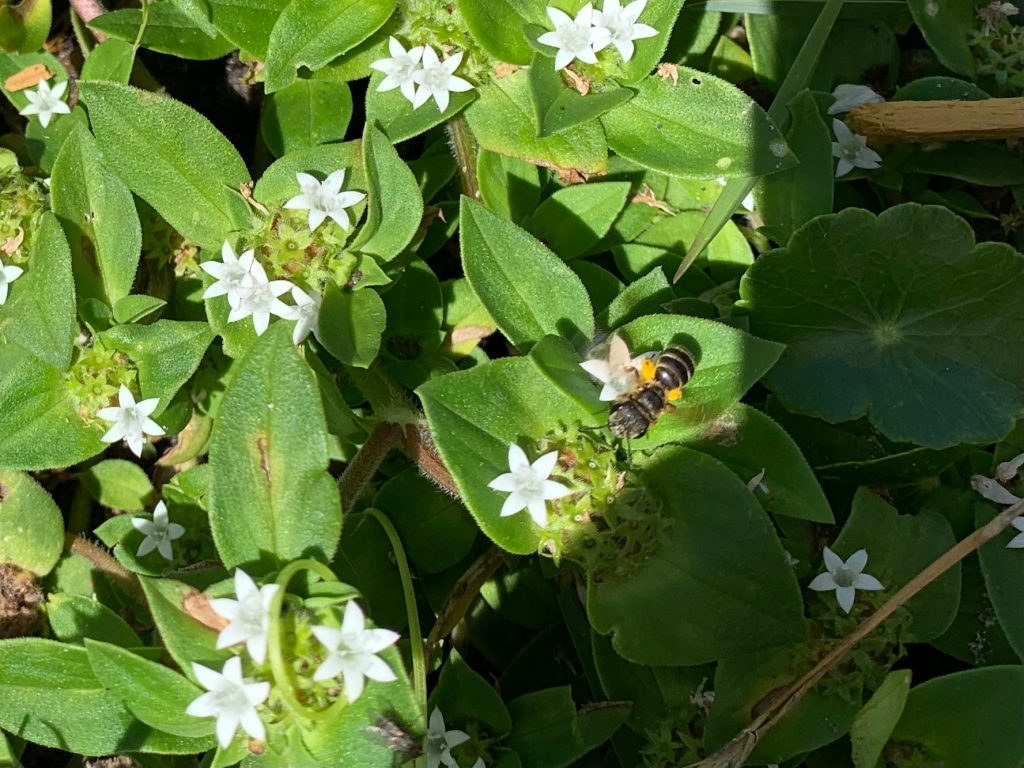
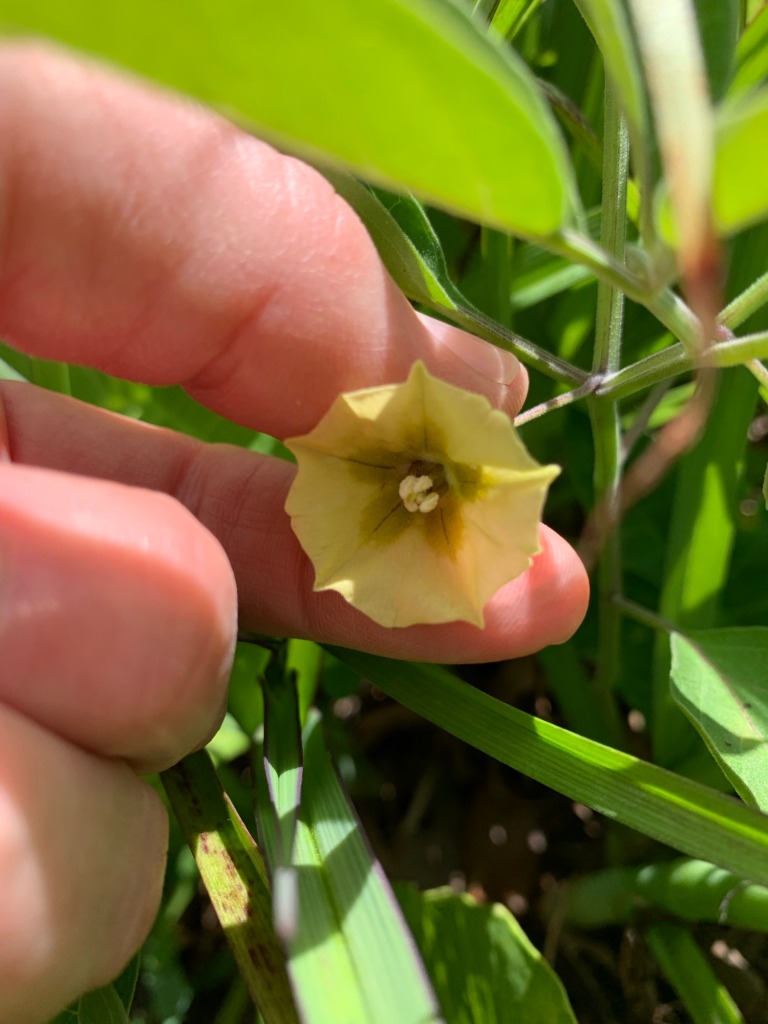

This white flowering “Bidens alba” is a particular nuisance when the seeds form. They stick to everything… my clothes, my cats, and are hard to remove. I plan to cut them down before the seeds form!
Watermelon, Cucumber and Seminole Pumpkin
Three types of watermelon have been planted, along with my much loved Seminole Pumpkin. The cucumbers are also in the ground and I am hoping to beat the moths this year.
So much more is happening in the yard, but for now that is all I have to share. There is still much work to be done, with mulching and walkways, compost and watering. It is fun work.
Anyway… I hope you are planting, or planning an upcoming garden, and I’d love to hear all about it. Happy Spring!
Keep reading…
Grow Roselle Hibiscus in the Florida Garden
This spring I have added Roselle Hibiscus to my backyard garden. A plant that loves the heat is always welcome to the yard, and this one is also full of health benefits.
Building a New Garden Path
The past winter and spring months have kept me busy in the garden. The planing, planting, weeding, and watering has been a first priority and I’ve neglected the walkways. Also, I still don’t have my own vehicle and must depend on getting rides to the yard shop. Between all that and the weather, I’ve put…
Florida Winter Growing Success and Failures
After the long, sweltering summer, I was looking forward to planting crops for Fall and Winter. It has been fun, and definitely a learning adventure. Some crops have done very well and others are on my “maybe again” list. Most things were grown from seeds I purchased, either from The Urban Harvest, or Southern Exposure…
